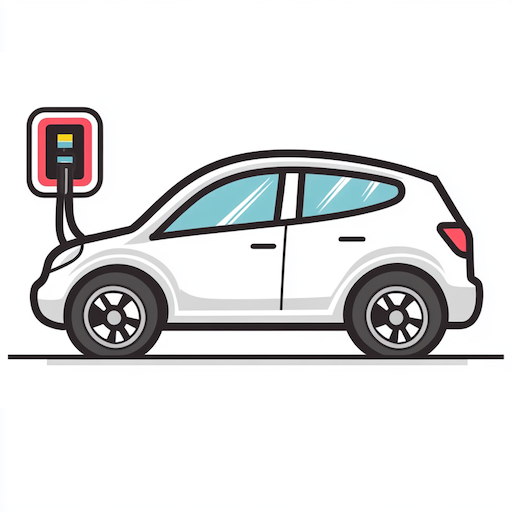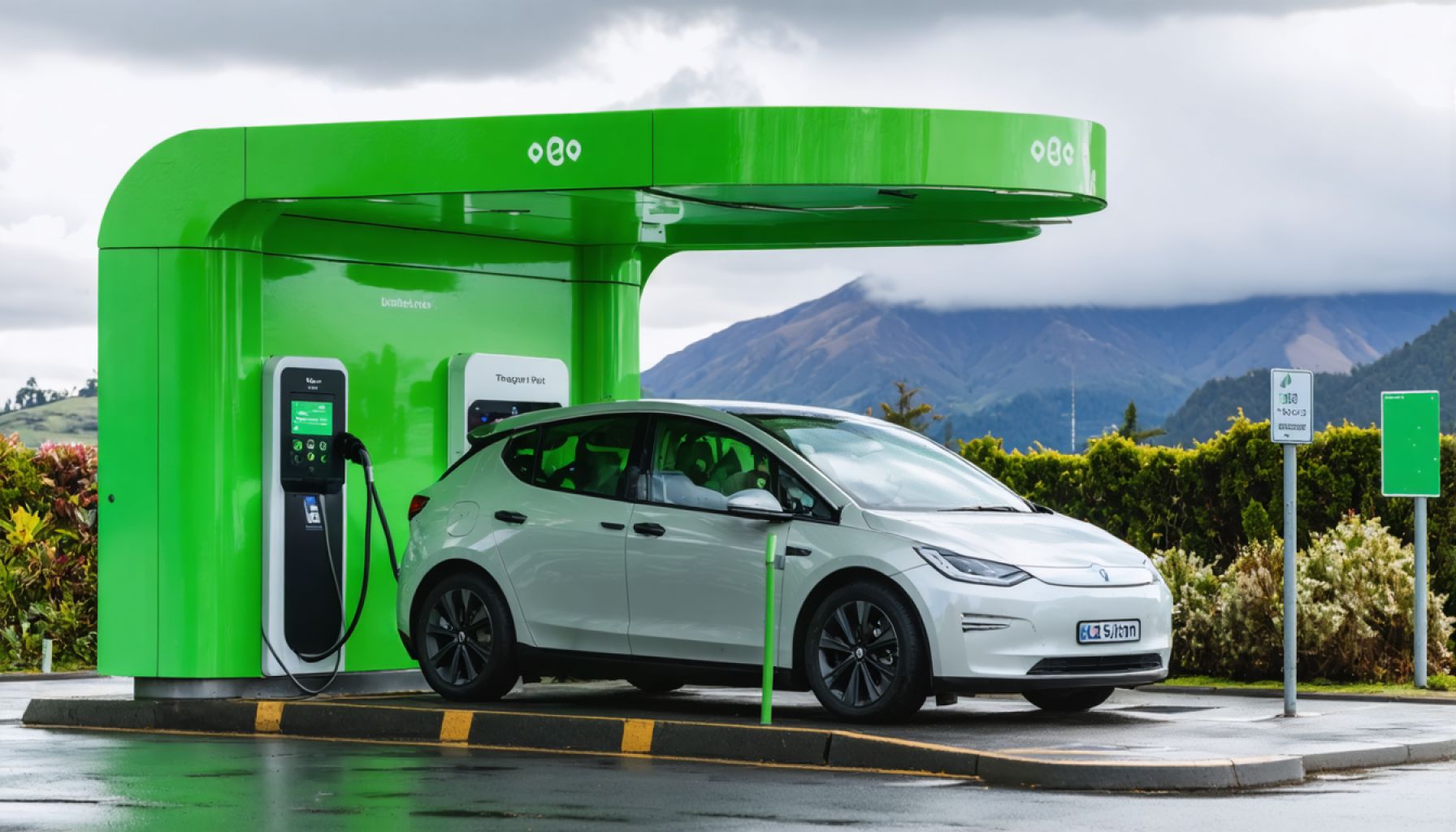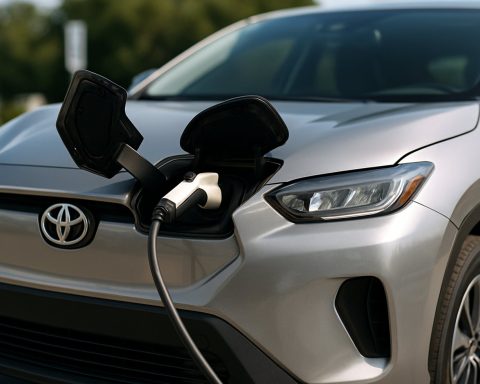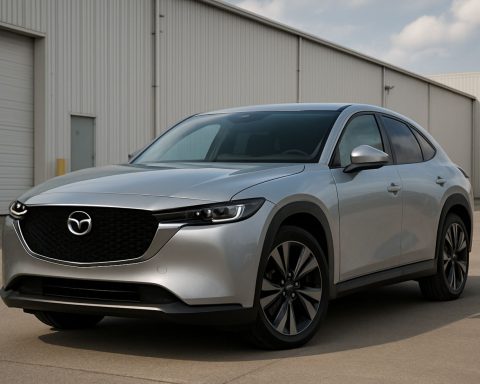- Springs Junction in New Zealand hosts advanced EV chargers, transforming travel for eco-conscious drivers in the region.
- The initiative is powered by Meridian Energy and Relectrify, utilizing recycled Nissan Leaf batteries in two 50 kW chargers.
- Three 130 kWh battery energy storage systems (BESS) charge overnight, providing power during peak daylight travel hours.
- This innovative solution addresses “charging deserts” with sustainable energy, promoting a greener future for the South Island.
- Overcoming challenges posed by the remote terrain required creative technological adjustments and efficient grid interaction.
- The project’s success involved funding from the Energy Efficiency and Conservation Authority to support low emission transport.
- New Zealand’s initiative exemplifies blending technology and sustainability for a cleaner, electrified tomorrow.
Nestled among the unspoiled beauty of New Zealand’s South Island, a technological marvel has quietly emerged at Springs Junction. This remote locale, 208 kilometers north of Christchurch, now hosts cutting-edge electric vehicle (EV) chargers that promise to transform the way eco-conscious travelers navigate these serene landscapes.
These aren’t just any chargers. Backed by the ingenuity of both Meridian Energy and Melbourne-based startup Relectrify, these high-tech stations honor both the needs of modern EV users and the rhythms of the natural environment. At the heart of this initiative lie two robust 50 kW chargers that draw power from the innovative use of recycled Nissan Leaf batteries.
The project sprang to life as a bold answer to the so-called “charging deserts” that scattered across the South Island, places where EV drivers found scarce options to recharge their vehicles. Here, the engineers faced a considerable challenge: power supply constraints meant the local network had enough juice to handle only small tasks, like boiling a kettle, during peak hours. To solve this, they harnessed three powerful 130 kWh battery energy storage systems (BESS) which store energy quietly at night when demand dips.
As the sun rises, these ever-vigilant batteries unleash their stored energy, ensuring drivers have access to charging power exactly when the daylight beckons them to the road. The solution blends technology with sustainability, showcasing how repurposed car batteries can breathe new life into the energy ecosystem and pave the way for a greener future.
But the journey to realization was not without its hurdles. The remote terrain posed unforeseen obstacles, demanding creative technological reengineering. With the deft guidance of Relectrify, Meridian Energy reimagined how these BESS units connect and converse with the grid, ensuring they draw only when surplus electricity is available. The result? A vivid illustration of Kiwi ingenuity.
Meanwhile, as the humming chargers settle into their task, Meridian monitors the site closely, ready to adapt and respond to user needs. The project’s story is still unfolding, pointing to a future where EV charging aligns seamlessly with the environmental ethos of the region.
Springs Junction’s pioneering venture also received a boost through co-funding from the Energy Efficiency and Conservation Authority’s low emission transport fund—an initiative reinforcing New Zealand’s commitment to a sustainable tomorrow.
As travelers pause amidst striking mountain vistas to charge up, the message resounds clearly: innovation can indeed thrive in the most unexpected corners, crafting a new chapter in the journey toward sustainable energy solutions. With every whir of these stations, New Zealand drives a little further down the road to a clean, electrified future.
Revolutionizing EV Charging in Remote Areas: How New Zealand’s Green Initiative Sets a New Standard
Overview
New Zealand’s South Island boasts a new technological marvel at Springs Junction, where cutting-edge electric vehicle (EV) chargers have been introduced. These chargers, powered by recycled Nissan Leaf batteries, represent a significant advancement in sustainable energy, particularly in addressing “charging deserts” in remote locales. This initiative, led by Meridian Energy in collaboration with Relectrify, highlights the potential of repurposed technology in fostering a greener future.
Additional Information & Analysis
How It Works: Steps to Success
1. Energy Storage and Management: The project utilizes three 130 kWh battery energy storage systems (BESS) to store energy during off-peak hours.
2. Sustainable Charging: During the day, stored energy is efficiently released to power two 50 kW chargers, ensuring that EV drivers have access to the charging facilities they need.
3. Grid Interaction: These systems are designed to draw energy from the local grid only when excess power is available, minimizing their impact on the existing power infrastructure.
Real-World Use Cases
– Tourism and Travel: By ensuring reliable EV charging in remote tourist locations, the initiative supports eco-tourism and encourages sustainable travel practices.
– Local Development: These innovative charging stations can promote economic development in rural areas by attracting travelers who rely on EVs.
Market Trends
– According to the International Energy Agency, the global EV market is growing rapidly, with sales expected to reach 10% of global car sales by 2025. Initiatives like those at Springs Junction are crucial in supporting this growth and ensuring infrastructure keeps pace with vehicle adoption.
Pros and Cons Overview
Pros:
– Utilizes repurposed materials, supporting sustainability.
– Enhances EV charging infrastructure in remote areas.
– Aligns with New Zealand’s commitment to reducing emissions.
Cons:
– Initial setup in remote locations may be costly and logistically challenging.
– Dependence on local grid dynamics may limit scalability.
Controversies & Limitations
While innovative, the integration of recycled batteries raises questions about lifespan and efficiency compared to new counterparts. Moreover, the reliance on surplus grid energy may pose risks if local energy production does not consistently meet demand.
Security & Sustainability
– Security: Advanced monitoring ensures real-time responsiveness to potential issues, safeguarding both the equipment and its users.
– Sustainability: This project supports a circular economy by giving new life to used EV batteries, which can reduce waste and lessen the demand for new materials.
Recommendations
For regions considering similar initiatives, here are some actionable insights:
– Community Engagement: Educating the local community and travelers about the sustainability benefits can boost adoption.
– Scalability: Develop partnerships with energy suppliers to ensure grid readiness and expand charging networks efficiently.
– Continuous Monitoring: Implement a robust system for real-time monitoring and management to swiftly address any operational issues.
Conclusion
New Zealand’s initiative at Springs Junction serves as an exemplary model for integrating sustainability into technology, particularly in addressing the challenges of EV infrastructure in remote areas. As the global shift toward electric vehicles accelerates, innovative solutions like these will play a pivotal role in making sustainable transportation accessible and practical for all.
For more information about initiatives like this, visit Meridian Energy or learn more about emerging EV technologies and trends through Relectrify.












